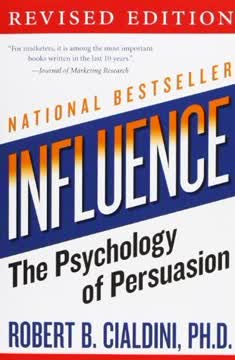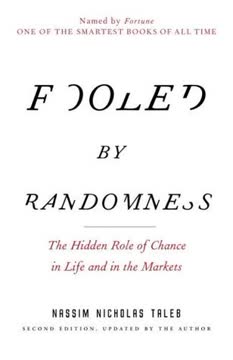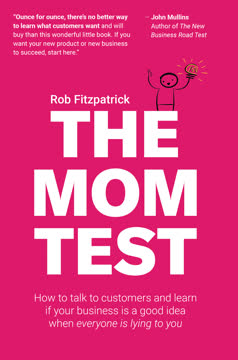Key Takeaways
1. Treat the reader's time as more valuable than your own
The Iron Imperative: Treat the reader's time as more valuable than your own.
Respect your reader's time. This principle is the foundation of effective writing. By prioritizing the reader's time over your own, you force yourself to be concise, clear, and purposeful in your communication. This approach leads to more engaging and impactful writing.
Eliminate unnecessary content. Before sending any written communication, ask yourself:
- Is this information essential?
- Can I convey this message more concisely?
- Does every word serve a purpose?
Focus on the reader's needs. Tailor your writing to your audience by considering:
- What information do they need?
- What action do you want them to take?
- How can you make it easier for them to understand and act?
2. Write shorter to communicate more effectively
Cut. Cut more. If you can't stand it, get someone else to edit and tell you which parts are weakest.
Brevity enhances clarity. Shorter writing is often more powerful and easier to understand. By condensing your message, you force yourself to focus on the most important points and eliminate unnecessary fluff.
Techniques for writing shorter:
- Set word count limits for different types of communication (e.g., 250 words for emails, 750 for blog posts)
- Use bullet points to organize information
- Eliminate redundant phrases and ideas
- Replace long explanations with concise examples
- Cut weak arguments entirely
Edit ruthlessly. After writing your first draft, challenge yourself to cut at least 10% of the content. This process will help you identify and remove unnecessary words, sentences, or even entire paragraphs that don't contribute to your main message.
3. Front-load your writing with the most important information
Get to the point.
Start with your conclusion. Put your main idea or most important information at the beginning of your writing. This approach ensures that even if readers don't finish the entire piece, they'll still get the key message.
Techniques for front-loading:
- Use clear, descriptive titles and subject lines
- Begin emails with a one-sentence summary of your purpose
- Start reports with an executive summary that captures the key points
- Use subheadings to highlight main ideas throughout longer pieces
Invert the traditional writing structure. Instead of building up to your conclusion, state it upfront and then provide supporting details. This approach respects your reader's time and helps them quickly grasp the main point.
4. Eliminate passive voice to enhance clarity and directness
Fixing passive voice will force you to think about who is acting in the sentences you write.
Active voice creates clarity. By using active voice, you make it clear who is performing the action in your sentences. This clarity helps readers understand your message more easily and often makes your writing more engaging.
Identify and fix passive voice:
- Look for forms of "to be" (is, was, were, etc.) followed by a past participle
- Ask yourself, "Who is performing the action?"
- Rewrite the sentence with the actor as the subject
Benefits of active voice:
- Increases directness and impact
- Improves readability
- Reduces word count
- Forces you to be specific about who is responsible for actions
5. Replace jargon with clear, simple language
If you can't explain it simply, you don't understand it well enough.
Jargon creates barriers. Using specialized terminology or industry-specific language can make your writing inaccessible to many readers. By replacing jargon with simple, clear language, you make your message more understandable and relatable to a wider audience.
Strategies for eliminating jargon:
- Define your audience and their level of expertise
- Explain complex concepts using analogies or examples
- Use common words instead of technical terms when possible
- If you must use jargon, define it clearly
Benefits of simple language:
- Increases comprehension
- Broadens your potential audience
- Demonstrates a deep understanding of the subject matter
- Makes your writing more memorable and shareable
6. Remove weasel words to strengthen your message
Weasel words—qualifiers like "very" and "generally"—make you, the writer, feel better at the expense of clarity and boldness. Prune them mercilessly.
Weasel words weaken your message. Qualifiers and vague terms like "very," "many," "some," and "generally" can make your writing sound uncertain or evasive. By removing these words, you create more direct and impactful statements.
Common weasel words to avoid:
- Very, extremely, quite
- Many, several, some
- Generally, usually, typically
- Basically, essentially, fundamentally
- Maybe, possibly, perhaps
Strategies for eliminating weasel words:
- Replace qualifiers with specific numbers or percentages
- Make definitive statements when you have evidence to support them
- If you're unsure, acknowledge the uncertainty directly rather than hedging
7. Use numbers wisely to support your arguments
Words lie. Numbers don't.
Numbers add credibility. When used correctly, statistics and data can provide strong support for your arguments and make your writing more persuasive. However, it's crucial to use numbers ethically and effectively.
Guidelines for using numbers:
- Provide context for all statistics (e.g., compare to industry averages or historical data)
- Use precise numbers when possible, but round off when appropriate
- Cite sources for all data
- Explain the significance of the numbers you present
Common pitfalls to avoid:
- Cherry-picking data to support your argument
- Presenting correlation as causation
- Using outdated or unreliable sources
- Overwhelming readers with too many statistics
8. Reveal structure to make your writing more accessible
Prose sucks.
Structure enhances readability. By breaking up your writing into clear sections with headings, bullet points, and other visual elements, you make it easier for readers to navigate and understand your content.
Techniques for revealing structure:
- Use descriptive headings and subheadings
- Incorporate bullet points and numbered lists
- Include tables to organize complex information
- Add relevant graphics or charts to illustrate key points
- Use white space effectively to separate sections
Benefits of clear structure:
- Allows readers to quickly scan for relevant information
- Makes your writing more visually appealing
- Helps readers understand the relationships between different ideas
- Improves retention of key points
9. Collaborate effectively without compromising quality
It's your document. You're writing it, and your name is probably going to go on it.
Maintain control of your writing. While collaboration can improve your work, it's essential to maintain your vision and voice throughout the process. Learn to incorporate feedback effectively without losing the core of your message.
Strategies for effective collaboration:
- Clearly define roles and responsibilities for all contributors
- Set expectations for the type of feedback you're seeking at each stage
- Use collaborative tools that allow for easy tracking of changes and comments
- Be open to constructive criticism, but don't be afraid to defend your choices
Managing feedback:
- Consider all suggestions, but don't feel obligated to implement every change
- Look for patterns in feedback to identify areas that need improvement
- Use feedback as an opportunity to clarify and strengthen your arguments
- Remember that you are ultimately responsible for the final product
10. Master different writing formats for maximum impact
Writing is writing.
Adapt to different mediums. While the core principles of clear communication apply across all formats, each medium has its own conventions and best practices. By mastering these formats, you can ensure your message is effectively delivered in any context.
Key writing formats to master:
- Emails
- Social media posts
- Blog articles
- Press releases
- Reports and white papers
- Presentations
General tips for all formats:
- Understand your audience and their expectations
- Tailor your tone and style to the medium
- Use appropriate formatting and visual elements
- Include clear calls to action when relevant
- Proofread and edit carefully before publishing or sending
Last updated:
FAQ
1. What is "Writing Without Bullshit" by Joshua Bernoff about?
- Focus on clear business writing: The book is a practical guide to writing clearly, concisely, and directly in a business context, eliminating unnecessary jargon, passive voice, and filler.
- Addresses the problem of "bullshit": Bernoff defines "bullshit" as writing that wastes the reader’s time by being unclear, verbose, or evasive, and he explains why it’s so prevalent in modern business communication.
- Presents actionable strategies: The book offers step-by-step advice and techniques to help professionals write more effectively, from emails to reports to social media posts.
- Emphasizes reader-centric writing: Central to the book is the "Iron Imperative": treat the reader’s time as more valuable than your own.
2. Why should I read "Writing Without Bullshit" by Joshua Bernoff?
- Career advancement: Bernoff argues that clear, bold writing can boost your career by making you stand out as a communicator with integrity and impact.
- Universal relevance: The book is for anyone who writes at work—emails, reports, web copy, or social media—regardless of their role or industry.
- Practical, proven advice: The methods are based on Bernoff’s experience with thousands of professionals and are illustrated with real-world examples and case studies.
- Immediate application: The book’s tips can be applied right away to improve your writing and reduce the time you and your readers spend on ineffective communication.
3. What are the key takeaways from "Writing Without Bullshit" by Joshua Bernoff?
- Adopt the Iron Imperative: Always treat the reader’s time as more valuable than your own.
- Write short and front-load: Get to the point quickly, use fewer words, and put your main message at the top.
- Eliminate passive voice, jargon, and weasel words: These habits obscure meaning and waste time; replace them with direct, active, and clear language.
- Plan and revise purposefully: Use tools like ROAM (Readers, Objective, Action, iMpression) and fat outlines to clarify your intent and structure before writing.
4. What is the "Iron Imperative" in "Writing Without Bullshit" by Joshua Bernoff?
- Definition: The Iron Imperative is Bernoff’s core principle: "Treat the reader’s time as more valuable than your own."
- Guiding all writing decisions: Every recommendation in the book is designed to help you respect your reader’s time and attention.
- Counteracts common business habits: It challenges the tendency to write for your own convenience, deadlines, or self-protection, which leads to unclear and bloated writing.
- Moral and practical impact: Following the Iron Imperative not only improves your writing but also enhances your integrity and reputation.
5. How does Joshua Bernoff define "bullshit" in business writing, and why is it a problem?
- Definition of bullshit: Bullshit is any writing that fails to communicate clearly and accurately, including jargon, passive voice, unnecessary qualifiers, and poorly organized thoughts.
- Wastes time and erodes trust: It burdens readers, obscures meaning, and can damage your credibility and relationships at work.
- Root causes: Bernoff traces the problem to poor training in school, lack of editing in the workplace, and a culture of risk aversion and self-protection.
- Measurable impact: He introduces the "meaning ratio"—the proportion of meaningful words in a passage—to quantify how much of business writing is actually useful.
6. What is the ROAM method in "Writing Without Bullshit" by Joshua Bernoff, and how do I use it?
- ROAM explained: ROAM stands for Readers, Objective, Action, and iMpression—the four questions to answer before starting any writing project.
- Clarifies purpose: Identify who your readers are, what change you want to create in them, what action you want them to take, and what impression you want to leave.
- Guides content and tone: ROAM helps you focus your writing, cut irrelevant material, and choose the right style for your audience.
- Target sentence: Summarize your ROAM analysis in a single sentence to keep your writing on track throughout the process.
7. What practical techniques does "Writing Without Bullshit" by Joshua Bernoff recommend for clearer writing?
- Write short: Edit ruthlessly, aim for specific word counts, and remove unnecessary introductions and repetition.
- Front-load your message: Put your main point in the subject line, title, or first sentence, so readers get the gist immediately.
- Purge passive voice: Use active constructions to clarify who is responsible for actions.
- Replace jargon and weasel words: Use plain language and specific facts or numbers instead of vague or inflated terms.
- Reveal structure: Use headings, bullets, tables, and graphics to make your writing skimmable and easy to navigate.
8. How does "Writing Without Bullshit" by Joshua Bernoff address fear and psychology in business writing?
- Fear as a root cause: Bernoff explains that fear of being wrong, criticized, or held responsible leads to evasive, unclear writing.
- Integrity over fear: He encourages writers to choose integrity and directness, even when it feels risky.
- Practical examples: The book shows how fear manifests in real emails and documents, and how to rewrite them boldly.
- Special note for women: Bernoff discusses how societal expectations can make directness especially challenging for women, but argues that clear writing can help overcome these barriers.
9. What are the most common bad habits in business writing, according to "Writing Without Bullshit" by Joshua Bernoff, and how can I fix them?
- Passive voice: Hides responsibility and makes writing vague; fix by identifying the actor and using active verbs.
- Jargon: Alienates readers outside your "insider" group; replace with plain, accessible language.
- Weasel words: Qualifiers like "very," "many," or "potentially" weaken your statements; replace with specific facts or delete them.
- Overly long writing: Results from insecurity and lack of editing; cut unnecessary sections, combine points, and use bullets or graphics for clarity.
10. How does "Writing Without Bullshit" by Joshua Bernoff recommend handling numbers and data in business writing?
- Provide context: Always compare numbers to something familiar or relevant so readers understand their significance.
- Be precise but not misleading: Use the right number of significant digits and avoid false precision.
- Cite sources and methodology: Ensure your data is credible by referencing where it comes from and how it was collected.
- Avoid bias and spurious correlations: Present numbers honestly, consider alternative explanations, and be aware of confirmation bias.
11. How does "Writing Without Bullshit" by Joshua Bernoff suggest adapting writing for different business formats (emails, reports, social media, etc.)?
- Universal principles apply: The Iron Imperative, clarity, brevity, and directness are essential in all formats.
- Email: Use clear subject lines, concise bodies, and direct calls to action; avoid unnecessary recipients and long threads.
- Reports: Structure with descriptive titles, executive summaries, skimmable sections, and actionable recommendations.
- Social media and blogs: Front-load content, use engaging titles and graphics, and write for sharing and conversation.
- Press releases and web pages: Focus on facts, direct voice, and reader benefit; minimize jargon and boilerplate.
12. What are the best quotes from "Writing Without Bullshit" by Joshua Bernoff, and what do they mean?
- "Treat the reader’s time as more valuable than your own." This is the Iron Imperative, the book’s central principle, urging writers to prioritize clarity and brevity.
- "If you plant daisies around a pile of poo, it still stinks." Bernoff’s colorful way of saying that dressing up bad news or unclear writing doesn’t make it better—honesty and directness are required.
- "Bullshit is communication that wastes the reader’s time by failing to communicate clearly and accurately." This definition underlines the book’s focus on meaningful, effective writing.
- "If you can’t explain it simply, you don’t understand it well enough." Quoting Einstein, Bernoff emphasizes that clarity is a sign of true understanding, not a lack of sophistication.
- "The tighter you write, the more persuasive you will be." Conciseness is not just about saving time—it also makes your arguments stronger and more convincing.
Review Summary
Writing Without Bullshit receives mixed reviews, with an overall positive reception. Many readers praise its practical advice on concise, clear business writing, highlighting the "Iron Imperative" principle of valuing the reader's time. Some find it particularly useful for emails and reports. Critics argue that the book doesn't fully follow its own advice, becoming repetitive and lengthy. While some reviewers consider it essential for professional development, others feel it's more suited for beginners or marketing professionals rather than academics.
Similar Books








Download PDF
Download EPUB
.epub digital book format is ideal for reading ebooks on phones, tablets, and e-readers.




